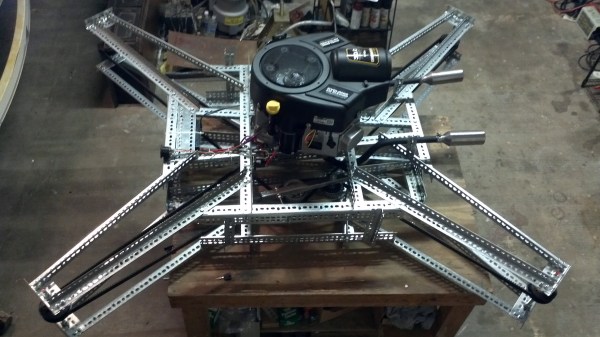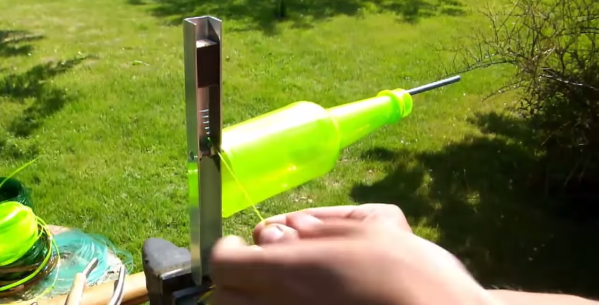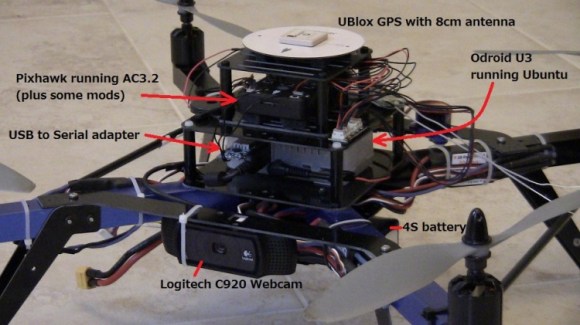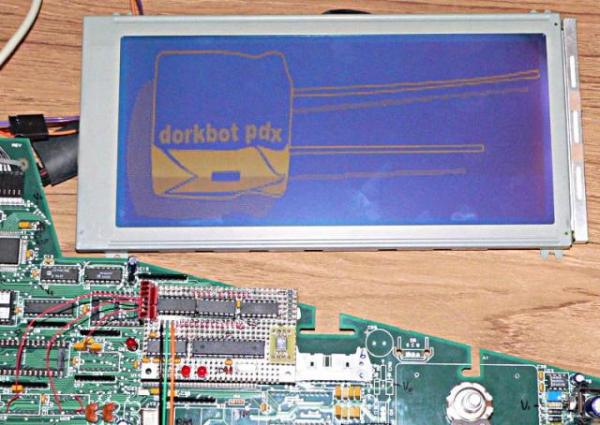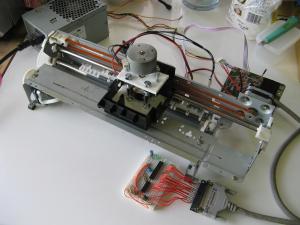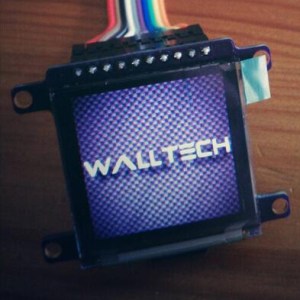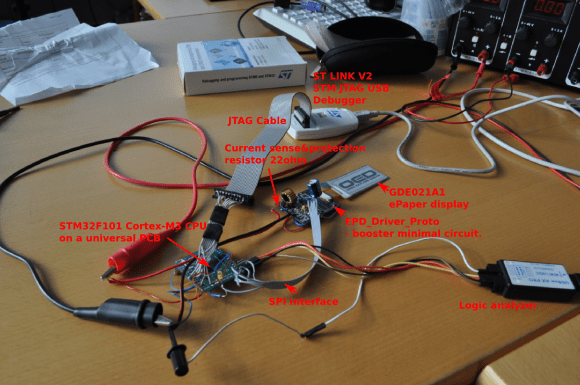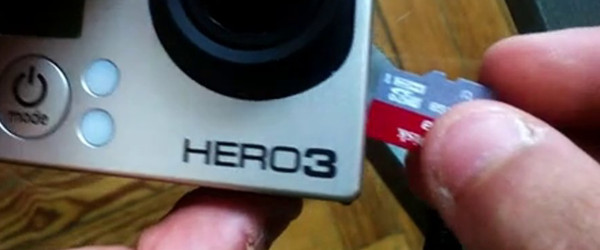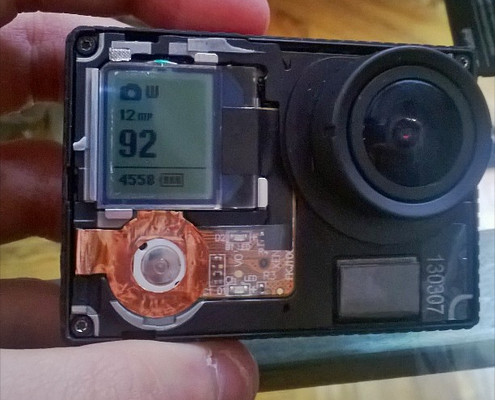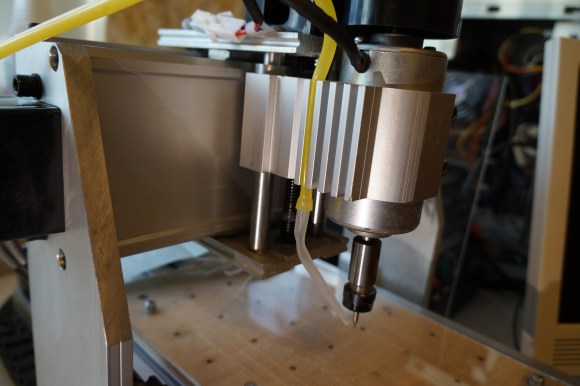We see quadcopter projects all the time here on Hackaday, so it takes something special to get our attention. [Peter McCloud] has done just that with Goliath, a gas powered quadcopter he’s entered in The Hackaday Prize. By gas, we don’t mean a little glow fuel buzzer, We’re talking about a 30 horsepower V-twin lawnmower engine running good old-fashioned gasoline.
Multicopters powered by a single power source present a unique set of problems. Quadcopter propellers need to rotate in opposite directions to avoid the entire craft spinning due to torque action. With individual electric motors that’s as easy as swapping a couple of wires. Not so with a single rotating engine. [Peter] has accomplished this feat with a clever arrangement of single and double-sided belts.
Control is another issue. Generally, central powered multicopters use collective pitch, similar to a helicopter control system. [Peter] has decided to go with high-efficiency fixed pitch blades and a vane system for directional control. Much like hovercraft use vanes to steer, Goliath will use vanes to affect its attitude and yaw.
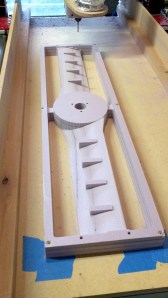 The propellers are works of art in their own right. [Peter] modeled the propellers in CAD using the principles of blade element theory, then used a Shopbot style CNC to carve them out of pink insulation foam. Styrofoam alone won’t withstand the 60 lbs each propeller will be supporting, so [Peter] plans to laminate the props in composite cloth. This is the similar to the way many full-scale helicopter rotor blades are assembled.
The propellers are works of art in their own right. [Peter] modeled the propellers in CAD using the principles of blade element theory, then used a Shopbot style CNC to carve them out of pink insulation foam. Styrofoam alone won’t withstand the 60 lbs each propeller will be supporting, so [Peter] plans to laminate the props in composite cloth. This is the similar to the way many full-scale helicopter rotor blades are assembled.
Goliath’s frame is constructed of Dexion style slotted steel angles, and we have to admit, at 240 lbs with engine, it seems like it’s going to be a heavy beast. Big enough to ride at least. Who knows… if the judges like it [Peter] may ride Goliath all the way to space!
![]() The project featured in this post is an entry in The Hackaday Prize. Build something awesome and win a trip to space or hundreds of other prizes.
The project featured in this post is an entry in The Hackaday Prize. Build something awesome and win a trip to space or hundreds of other prizes.

